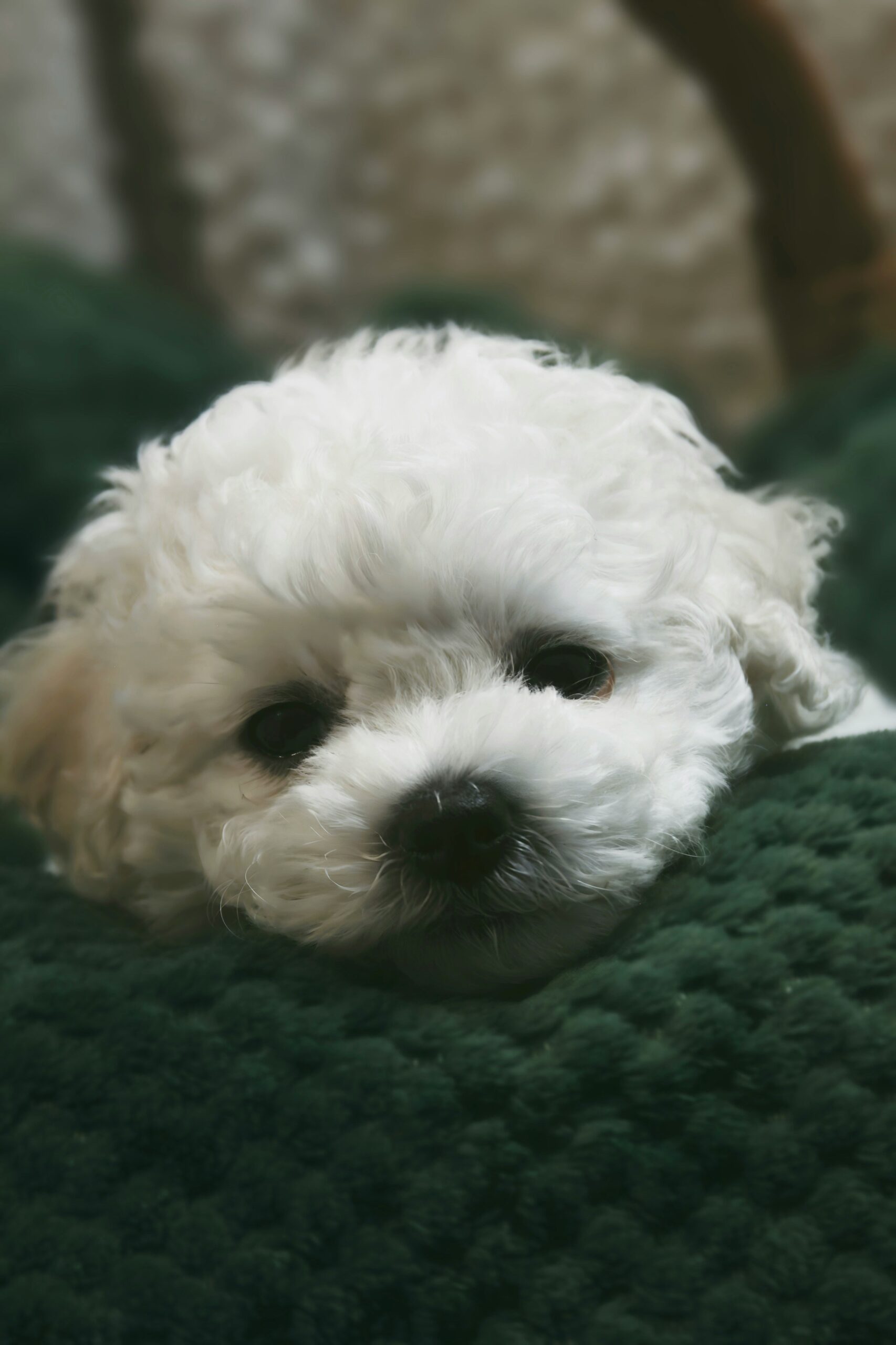If you’re in the market for a furry friend that’s as cuddly as it is charming, look no further than the bichon frise. With its puffy coat, cheerful personality, and a knack for turning even the grayest of days into a sunny affair, this little companion is sure to steal your heart. But there’s more to these playful pups than meets the eye; from their origins to their grooming needs, understanding the bichon frise will equip you for the delightful adventure that lies ahead. So, let’s dive into everything you need to know about this adorable breed!
Overview of the Bichon Frise Breed
The bichon frise is like a walking cloud that comes with a sprinkle of personality and a heap of charm! Hailing from the Mediterranean, this small dog boasts a cotton-ball coat and a discernible flair for being the center of attention. Here’s why they are simply paw-some:
- Size: Typically, bichon frises weigh between 12 to 18 pounds and stand about 9.5 to 11.5 inches tall—perfect for snuggling or scooping up for a quick cuddle.
- Coat: Their curly, hypoallergenic coats minimize shedding, making them ideal for those with allergies (!). Regular grooming keeps their fluff in tip-top shape.
- Temperament: Known for being playful and affectionate, bichon frises are social butterflies who thrive on companionship and love to interact with their humans.
In summary, the bichon frise is the epitome of a cheerful companion, bringing smiles and endless joy. With their adorable antics and loving nature, it’s hard to resist these delightful balls of fluff!
History and Origins of the Bichon Frise
Ah, the delightful bichon frise! This fluffy little bundle of joy has an origins story that’s as charming as its personality.
- Historical Roots: The bichon frise dates back to at least the 13th century, with Mediterranean influences. Think of them as tiny sailors who hopped on ships to accompany their human companions.
- Royal Connections: They became favorites among French aristocrats and even graced the courts of royalty. You could say they were the Kardashians of their time—everyone wanted them!
- Name Game: The term “bichon” derives from the French word for “small dog,” while “frise” refers to their curly coats resembling puffs of cotton candy.
- Versatile Pups: Originally bred as companion animals, bichon frises have also participated in circuses and dog shows, showcasing their adaptability and playful nature.
In a nutshell, the charming bichon frise carries centuries of history, loyalty, and flair—perfectly positioned to stay your beloved lap warmer for ages!
Physical Characteristics of the Bichon Frise
The bichon frise isn’t just cute; it’s a walking bundle of fluff and joy! With its charming looks and delightful demeanor, this breed boasts some standout physical features:
- Size: This pint-sized pooch typically weighs between 12 to 18 pounds and stands about 9.5 to 11.5 inches tall. Perfect for snuggling!
- Coat: The bichon frise has a soft, curly coat that resembles cotton. This hypoallergenic fur doesn’t shed much, making it a breathe-easy option for allergy sufferers.
- Color: These little cloud-like cuties come in various shades of white, sometimes with hints of cream—so you can choose the one that tickles your fancy!
- Eyes: Their dark, expressive eyes give them an adorable, curious look. You can hardly resist those puppy-dog eyes!
- Tail: The bichon frise carries its plumed tail high, often curled over its back, adding a dash of flair to their charming appearance.
In essence, the bichon frise is like a cotton ball on legs, ready to brighten your day with their delightful presence!
Temperament and Behavior Traits
If you’re considering adding a bichon frise to your home, you’re in for a treat! Known for their cheerful disposition, these adorable companions have a personality that can light up any room. Here’s why you’ll fall head over heels for your bichon frise:
- Playful and Energetic: Bichon frises love to play fetch and enjoy frolicking around your living room. Prepare for lots of spontaneous zoomies!
- Affectionate and Social: These dogs thrive on companionship, often following their humans around like little shadows. They want to be your best friend – can you blame them?
- Intelligent and Quick Learners: Bichon frises are smart cookies. With consistent training, you’ll find them picking up commands and tricks faster than you can say “puppy!”
- Friendly with Everyone: Whether it’s kids, adults, or even other pets, a bichon frise is a social butterfly. They love bringing joy wherever they go.
To summarize, the bichon frise combines sweetness, charm, and exuberance, making them a perfect family pet! What more could you ask for? 🐾
Grooming Needs and Maintenance
Grooming your bichon frise is not just a beauty regime; it’s an essential part of keeping your fluffy friend healthy and happy. Their soft, curly coat is as adorable as it is high-maintenance. Here’s a quick grooming survival guide:
- Brushing: Invest in a good-quality pin brush. Aim for brushing your bichon frise every other day. This detangles their fur and prevents those pesky mats from forming.
- Bathing: Bathe your bichon every 3-4 weeks. Use a mild dog shampoo to keep that coat looking white and fluffy, not to mention smelling fantastic!
- Nail Trimming: Don’t let those nails get out of hand. Trim them every couple of weeks or whenever they get too clicky on your floor.
- Ear Cleaning: Keep those floppy ears free of wax and debris. Regularly check and clean them to avoid infections.
- Professional Grooming: Consider taking your bichon frise to a professional groomer every 6-8 weeks for a cut and fluff that will have heads turning.
With these grooming tips, your bichon frise will not only look fabulous but also feel their best!
Training Tips for Bichon Frise Owners
Training your bichon frise can be as delightful as a game of fetch—especially with their adorable, eager-to-please attitude. Here’s how to turn your charming ball of fluff into the canine companion of your dreams:
- Start Early: Begin socialization and basic commands when your bichon frise is a puppy. Early interactions with various people and environments boost confidence.
- Use Positive Reinforcement: Reward-based training works wonders. Treats, praise, or playful games will incentivize your bichon to learn. After all, who can resist a tasty morsel?
- Keep It Short and Fun: Use brief training sessions (5-10 minutes) to maintain their interest. Bichon frises thrive on attention and can quickly lose focus.
- Consistency is Key: Use the same commands and rewards. If you say “sit” one day and “down” the next, your bichon frise will be perplexed, much like a confused puppy at a dog park.
- Social Games: Incorporate play into training. For instance, teaching them to fetch not only builds obedience but also strengthens your bond.
Happy training! With these tips, your bichon frise will be impressing friends and family in no time.
Diet and Nutrition for a Healthy Bichon Frise
Feeding your bichon frise isn’t just about filling a bowl with kibble and waiting for the magic to happen. It’s about crafting a diet that supports that fluffy ball of energy and charm! Here’s how to keep your bichon frise healthy and happy.
Key Nutritional Needs:
- High-Quality Protein: Essential for muscle development. Look for chicken, turkey, or fish as the primary ingredient.
- Healthy Fats: Omega-3 and Omega-6 fatty acids boost their coat’s luster and skin health.
- Fiber: Keeps their digestive system running smoothly. Opt for brown rice or sweet potatoes as great sources.
Portion Control:
Bichon frises are petite but often have big personalities—this can lead them to beg for extra treats. To avoid overfeeding:
- Age: Puppies require about 3 meals a day, while adults thrive on 2 meals.
- Weight: Monitor their weight and adjust portions accordingly. Aim for about ½ to 1 cup of quality dog food daily, split between meals.
Table of Recommended Foods:
| Type of Food | Benefits | Examples |
|---|---|---|
| Dry Kibble | Great for dental health | Blue Buffalo, Royal Canin |
| Wet Food | Increased moisture and flavor | Wellness Core |
| Treats | Training reinforcement | Zuke’s Mini Naturals |
Remember, avoid feeding your bichon frise human food, especially toxic ones like chocolate and onions. With the right diet, your bichon frise will strut their stuff with flair and vitality!
Best Living Conditions for Bichon Frises
Creating the perfect home for your bichon frise is like setting the stage for a play—everything should be just right! These cheerful little companions thrive in environments that cater to their playful nature and social habits. Here’s how to ensure your bichon frise feels right at home:
- Space Matters: Whether you live in a high-rise or a cozy cottage, your bichon frise needs room to prance! A small space works if it’s filled with love and toys, but they’ll appreciate a bit of freedom to explore.
- Temperature Control: Bichon frises are not fans of extreme weather. Keep them cool in summer and cozy in winter. They’d prefer to sip a refreshing breeze on the patio rather than sweat it out on the sidewalk.
- Social Environment: Bichons are social butterflies. Ensure they have access to you, family, and other furry friends. Consider inviting a fellow bichon over for a playdate—pure joy!
In summary, a loving, temperature-controlled space that encourages social interactions will make your bichon frise the happiest pup on the block!
Best Living Conditions for Bichon Frises
Creating the perfect habitat for your bichon frise is crucial to ensure their happiness and health. Here’s how to transform your living space into a cozy canine haven:
- Space: Although they’re small, bichon frises love to explore and play. Aim for a moderately spacious area where they can romp around without knocking over your priceless collectibles!
- Indoor Comfort: These pups prefer climate-controlled environments. Keep them cool in summer and warm in winter. A comfy dog bed in a quiet corner will do wonders.
- Cleanliness: Regular cleaning is non-negotiable! Bichon frises have a fluffy coat that can trap dirt and allergens, so maintain a tidy space.
- Safety: Just like any curious soul, bichon frises can get into trouble. Ensure your home is puppy-proofed—cover electrical cords and remove any choking hazards.
- Outdoor Access: If you have a yard, make it bichon-friendly! A secure fenced area allows your little buddy to play safely.
With these tips, your bichon frise will thrive in a loving, nurturing environment, ready to brighten your days with their contagious joy!
Fun Activities and Exercises for Your Bichon Frise
Keeping your bichon frise entertained and active can be a delightful adventure! These fluffy little bundles of joy thrive on exercise and engagement. Here are some fun activities to consider:
- Daily Walks: Aim for at least 30 minutes each day. Your bichon frise will love exploring new scents while getting their wiggles out!
- Playtime: Invest in a few squeaky toys or a ball. Play fetch in the backyard or toss it down the hallway. They’ll retrieve it like a pro!
- Agility Training: Set up a mini obstacle course using household items. It stimulates their mind and body, while showcasing their agility.
- Socialization: Arrange playdates with other dogs or visit the park. Social skills are essential for a happy bichon frise.
- Puzzle Toys: Keep their brain busy! Use interactive toys to challenge their problem-solving skills.
Incorporate these activities into your routine, and watch your bichon frise flourish with energy, happiness, and well-being!
Frequently Asked Questions
What is a Bichon Frise, and why are they so adorable?
A Bichon Frise is a small, fluffy dog breed known for its cheerful demeanor and hypoallergenic coat that resembles a tiny cloud. They often look like living cotton balls, complete with a playful spirit, which makes them irresistibly adorable. Their affectionate nature earns them the title of ‘lap dog extraordinaire’! If their fluffy appearance doesn’t melt your heart, their lively antics surely will as they prance about like little comedians.
How much grooming do Bichon Frises need?
If you’re considering a Bichon Frise, prepare yourself for a grooming adventure! These fluffballs require regular grooming sessions, ideally every 4-6 weeks, to keep that gorgeous coat in tip-top shape and prevent matting. You’ll want to brush their fur at least a couple of times a week. But don’t worry, it’s not just about keeping them looking fabulous; it’s also a great excuse for bonding time – and who wouldn’t want to spend more time with a cuddly companion?
Are Bichon Frises good with children and other pets?
Absolutely! Bichon Frises are notorious for being the life of the party, and that includes gatherings with kids and other furry friends. Their playful and gentle nature makes them a fantastic family dog. However, it’s essential to supervise their interactions, especially with younger children, to ensure that everyone plays nice and no tiny toes end up being nibbled! With proper socialization, they thrive in a multi-pet household and can even become best buds with a feline friend.
What kind of exercise do Bichon Frises require?
Don’t let their fluffiness fool you – Bichon Frises are little bundles of energy in disguise! They thrive on daily walks, playtime, and mental stimulation (think puzzle toys!). Aim for at least 30 minutes of exercise a day, and they’ll be happy as a clam, or in their case, perhaps a happy little cloud! Too little activity might lead to boredom and a touch of mischief, so be prepared to engage their spirited souls!



